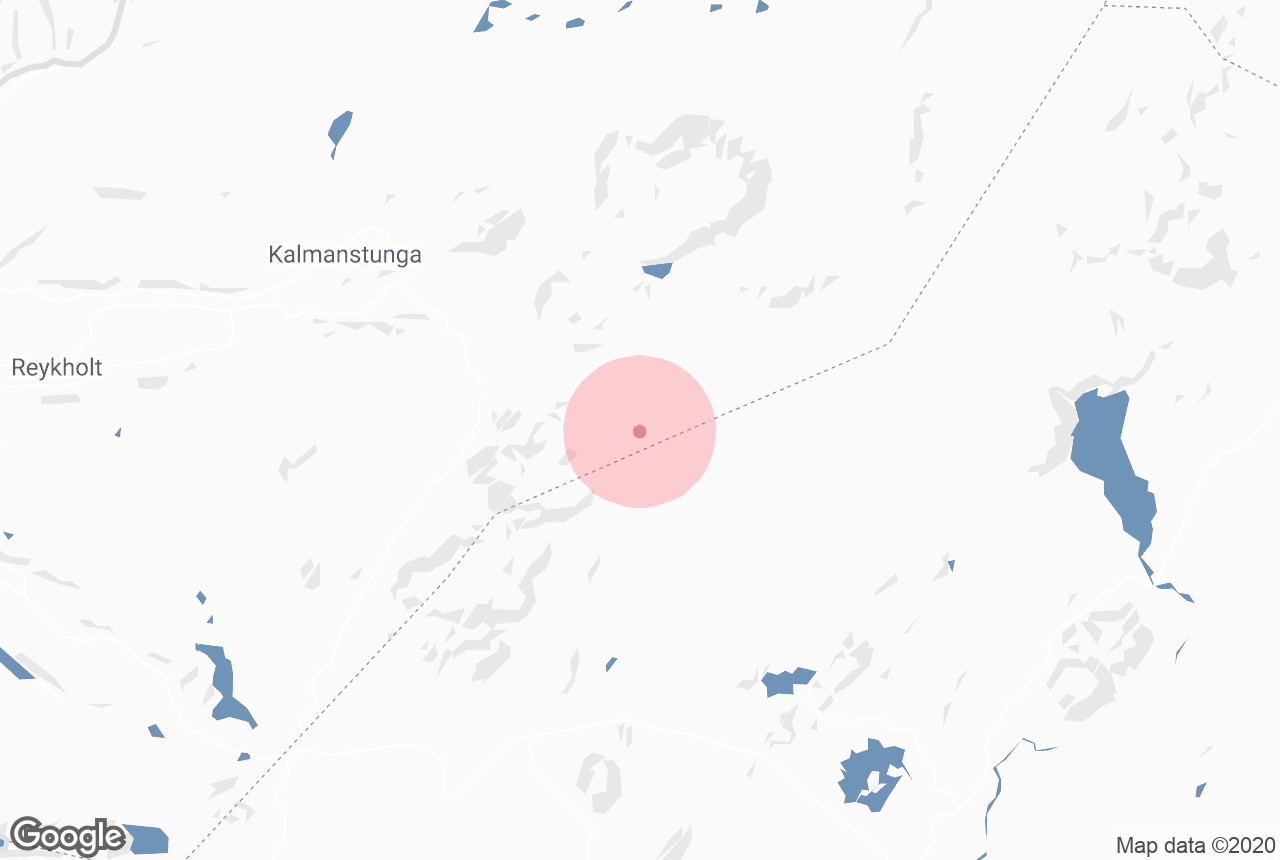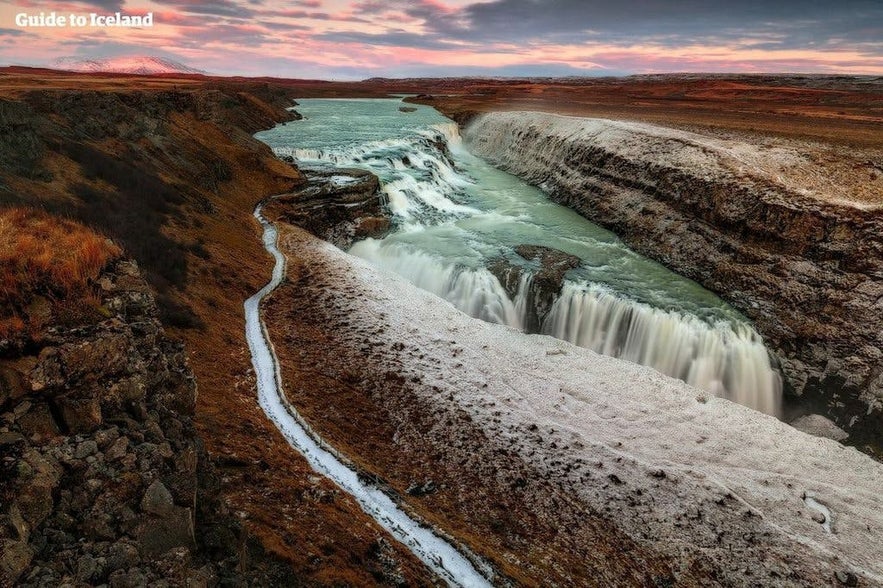Le puissant Langjökull, le "long glacier", est le deuxième plus grand glacier d'Islande, avec une superficie de 935 kilomètres carrés. Langjökull est le glacier le plus populaire d'Islande pour les excursions en jeep et en motoneige. Il est également possible d'y faire du ski et de la randonnée.
Langjökull n'est qu'à une heure de route de Reykjavik, vous pouvez donc louer une voiture bon marché et vous y rendre vous-même pour des excursions en motoneige par exemple. Vous pouvez également participer à des excursions au Langjokull pour découvrir le glacier et les nombreuses aventures qu'il offre. Si les glaciers vous intéressent, cliquez sur ce lien pour découvrir tous les excursions sur les glaciers en Islande. Poursuivez votre lecture pour tout savoir sur le glacier Langjokull.
Pourquoi Notre Contenu Mérite Votre Confiance
Guide to Iceland est la plateforme de voyage la plus fiable en Islande, aidant chaque année des millions de visiteurs. Tous nos contenus sont rédigés et vérifiés par des experts locaux qui connaissent parfaitement le pays.Comptez sur nous pour des conseils de voyage précis, actuels et fiables.
Les Pistes des Hautes Terres
Langjökull est situé dans les Hautes Terres, et deux pistes principales des Hautes Terres, reliant le nord et le sud de l'Islande longent ce glacier.
La route de Kaldidalur s'étend du parc national de Thingvellir vers le nord jusqu'à Húsafell. La route de Kjalvegur, quant à elle, se trouve à l'est du Langjökull et à l'ouest du glacier Hofsjökull, commençant près de la célèbre chute d'eau de Gullfoss au sud, et passant par la magnifique zone géothermique d'Hveravellir au nord.
Le Paysage du Langjokull
Langjökull mesure environ 50 kilomètres de long et jusqu'à 20 kilomètres de large, et la glace atteint une profondeur d'environ 580 mètres dans sa partie la plus épaisse. Le glacier atteint son point culminant dans sa partie la plus au nord, appelée Baldjökull, qui s'élève à environ 1 450 mètres au-dessus du niveau de la mer.
Le glacier repose sur un massif de montagnes hyaloclastites. Les sommets de ces montagnes sont visibles à certains endroits du glacier. Il cache également au moins deux systèmes volcaniques actifs, dont les caldeiras sont visibles depuis les airs.
Le plus connu de ces systèmes alimente la zone géothermique de Hveravellir, à l'est du Baldjökull. À l'est également se trouve le champ de lave de Kjalhraun, qui s'est formé il y a environ 7 800 ans.
Au nord-ouest du glacier se trouve un autre système qui a produit le vaste champ de lave de Hallmundarhraun, à travers lequel la rivière Hvítá coule en direction de la chute d'eau de Gullfoss. Dans la région se trouve également la plus longue grotte de lave d'Islande, la fascinante Surtshellir.
Au sud-ouest du Langjökull se trouve le champ de lave de Presthnúkur, dont les fissures se faufilent sous la glace. Au sud du glacier se trouve le champ de lave de Lambahraun et, plus au sud encore, le champ de lave de Skjaldbreiðarhraun et le volcan bouclier Skjaldbreiður.
Comparée à d'autres régions d'Islande, la zone est considérée comme relativement calme, avec seulement 32 éruptions au cours des 10 000 dernières années.
Dans le Glacier
Près des plus hauts sommets du Langjökull se trouve un tunnel de glace artificiel, véritable spectacle pour tout visiteur passant à proximité du glacier. Conçu et construit par le géophysicien et candidat à la présidence Ari Trausti Guðmundsson, ce tunnel permet aux visiteurs d'explorer l'intérieur d'un glacier sans avoir à se rendre en Islande au milieu de l'hiver pour avoir une chance de voir les grottes de glace, qui sont loin d'être fiables.
Les visiteurs traversent sous l'épaisse couche de glace de Langjökull, découvrant la couleur bleue vive à l'intérieur et se faisant une idée de la beauté, de la formation et des processus du glacier. C'est le seul endroit au monde où cela est possible. Les excursions « À l'intérieur du glacier » sont souvent combinées à des activités d'aventure telles que la motoneige.
Les Glaciers à Proximité
Les glaciers les plus proches du Langjökull sont Eiríksjökull, qui cache la plus haute montagne de l'ouest de l'Islande, et Thórisjökull. Le Hrútfellsjökull se trouve également à l'est du Langjökull.
Entre le Thórisjökull et le Geitlandsjökull se trouve une vallée appelée Thórisdalur. Outre les vues magnifiques qu'elle offre, elle figure en bonne place dans les légendes populaires islandaises. Le hors-la-loi Grettir le Fort de la Saga de Grettis, par exemple, y aurait résidé pendant un hiver.
Langjokull et le Cercle d'Or
L'itinéraire touristique le plus populaire d'Islande, le Cercle d'or, ne serait pas possible sans le glacier Langjökull. En effet, aucun de ses trois éléments emblématiques n'existerait dans son état actuel sans la fonte des glaces.
La cascade de Gullfoss en est l'exemple le plus évident. La rivière qui l'alimente, la Hvítá, est une rivière glaciaire qui coule directement du Langjökull. L'ampleur de la calotte glaciaire est mise en évidence par le volume d'eau qui tombe en cascade à chaque seconde.
Les sources chaudes de Geysir, quant à elles, sont alimentées en eau souterraine. L'eau provenant de la fonte des glaces du Langjökull s'écoule à travers les champs de lave environnants, dont la roche est très poreuse, pour former une rivière souterraine qui alimente la zone géothermique, d'où elle jaillit par des ouvertures naturelles.
Certes, sans Langjökull, Thingvellir conserverait son statut de parc national et de patrimoine mondial, qu'il a reçu pour avoir été le site d'origine de ce qui est aujourd'hui le parlement représentatif le plus ancien du monde, mais il serait nettement moins beau.
De nombreuses sources existent dans tout le parc, également formées par les eaux de fonte souterraines du glacier. Grâce à son long processus de filtration, l'eau est l'une des plus claires au monde.
La faille de Silfra est donc le meilleur endroit du pays pour la plongée en apnée et la plongée sous-marine, et elle est régulièrement classée parmi les dix meilleurs endroits au monde pour ce type d'activités.











